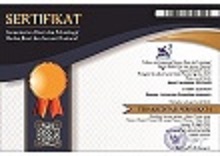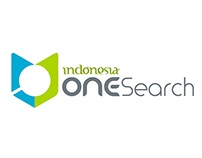PERAN PLACE IDENTITY DALAM MENCIPTAKAN COMMUNITY RESILIANCE DI WILAYAH URBAN FRINGE
Abstract
The urban growth in today's world is marked by rapid and massive urban expansion into rural areas. In the Tangerang area, the expansion is marked by the acquisition of agricultural land and settlements by developers as happened in the development of the new town of Gading Serpong. One of the impacts of land acquisition and settlement by developers has led to the emergence of many settlements confined within Gading Serpong's new town area. In spite of the changes in the immediate environment that are very fast and still going on today, changes also occur in native settlements, especially in the area because many land and its inhabitants are moved as a result of being freed by the developer. With very extreme changes occurring in the enclave settlement, raises the question of why and in what ways can an enclave settlement survive?To get answers to these questions, it is necessary to study the characteristics of settlements and indigenous peoples, as well as to examine the potential of the region in the context of place identity that can be maximized for the benefit of adaptation to environmental changes due to the growth of the region that is going on around it. The research use a qualitative method by obtaining the data directly through observation and in-depth interviews with residential dwellers to obtain the characteristics of settlements as well as characteristics of sosial life in the locus of study. The results obtained are that there is potential possessed by the native settlement that is place identity as the basis on the resilience of the inhabitants. Place identity is formed because of several factors that are actually very possible to synergize with all the factors involved in the growth of urban fringe. Thus it is expected that development in the urban fringe area will not leave the settlements and life of its pre-existing inhabitants as the content attached to the concept of sustainable development.
Keywords : place identiry, sustainable development, segregasi, kebertahanan
Full Text:
PDFReferences
Atiek, Suprapti, Kristanto Bangun, and Edward Endrianto Pandelaki. 2017. “Control of Spatial Protection in Kauman Semarang.” Journal of Architecture and Urbanism 41 (4): 268–177.
Fitri, Maya, and Sugeng Triyadi. 2015. “Community Cultures in Creating the Place-Bound Identity in Musi Riparian, Palembang.” Procedia - Sosial and Behavioral Sciences 184 (August 2014). Elsevier B.V.: 394–400. https://doi.org/10.1016/j.sbspro.2015.05.108.
Forrest, Ray, and Ade Kearns. 2001. “Sosial Cohesion, Sosial Capital and the Neighbourhood.” Urban Studies 38 (12): 2125–43. https://doi.org/10.1080/00420980120087081.
Heidari, Ali Akbar, and Shima Mirzaii. 2013. “Journal of Novel Applied Sciences Place Identity and Its Informant Parameters in Architectural Studies,” 260–68. www.jnasci.org.
III, UN Habitat. 2017. New Urban Agenda, Housing and Sustainable Urban Development. Quito: UN Habitat.
Ischak, M., B. Setioko, and D. Nurgandarum. 2018a. “Measuring the Scale of Sustainability of New Town Development Based on the Assessment of the Residents of the Native Settlement around the New Town Area of Gading Serpong Tangerang.” In IOP Conference Series: Earth and Environmental Science. Vol. 106. https://doi.org/10.1088/1755-1315/106/1/012016.
———. 2018b. “Socio Spatial Adaptation as a Resilience Form of Native Unplanned Settlement in Confrontation with New Planned Settlement Development Pressure (Case Study: Enclave Native Settlement in Serpong, Tangerang).” In IOP Conference Series: Earth and Environmental Science. Vol. 99. https://doi.org/10.1088/1755-1315/99/1/012009.
Jordhus-Lier, David. 2015. “Community Resistance to Megaprojects: The Case of the N2 Gateway Project in Joe Slovo Informal Settlement, Cape Town.” Habitat International 45 (P3). Elsevier Ltd: 169–76. https://doi.org/10.1016/j.habitatint.2014.02.006.
Kelly, Claire, Agostino Ferrara, Geoff A. Wilson, Francesco Ripullone, Angelo Nolè, Nichola Harmer, and Luca Salvati. 2015. “Community Resilience and Land Degradation in Forest and Shrubland Socio-Ecological Systems: Evidence from Gorgoglione, Basilicata, Italy.” Land Use Policy 46. Elsevier Ltd: 11–20. https://doi.org/10.1016/j.landusepol.2015.01.026.
Manenti, Claudia. 2011. “Sustainability and Place Identity.” Procedia Engineering 21: 1104–9. https://doi.org/10.1016/j.proeng.2011.11.2117.
Mcmanus, Phil, Jim Walmsley, Neil Argent, Scott Baum, Lisa Bourke, John Martin, Bill Pritchard, and Tony Sorensen. 2012. “Rural Community and Rural Resilience : What Is Important to Farmers in Keeping Their Country Towns Alive ?” Journal of Rural Studies 28 (1). Elsevier Ltd: 20–29. https://doi.org/10.1016/j.jrurstud.2011.09.003.
Missimer, Merlina, and Karl-henrik Rob. 2017. “A Strategic Approach to Sosial Sustainability E Part 1 : Exploring the Sosial System.” Journal of Cleaner Production 140: 32–41. https://doi.org/10.1016/j.jclepro.2016.03.170.
Pratt, Andy C. 2015. “City , Culture and Society Resilience , Locality and the Cultural Economy.” City, Culture and Society 6 (3). Elsevier Ltd: 61–67. https://doi.org/10.1016/j.ccs.2014.11.001.
Qazimi, Shukran. 2014. “Sense of Place and Place Identity.” European Journal of Sosial Sciences Education and Research 1 (1): 306–10.
Roseland, Mark. 2000. “Sustainable Community Development: Integrating Environmental, Economic, and Sosial Objectives.” Progress in Planning 54 (2): 73–132. https://doi.org/10.1016/S0305-9006(00)00003-9.
Setioko, Bambang, Edward Endrianto Pandelaki, and Titien Woro Murtini. 2013. “Towards Sustainable Urban Growth: The Unaffected Fisherman Settlement Setting (with Case Study Semarang Coastal Area).” Procedia Environmental Sciences 17. Elsevier B.V.: 401–7. https://doi.org/10.1016/j.proenv.2013.02.053.
Sievert, Thomas. 2003. Cities Without Cities. London: Spon Press.
Soetomo, Sugiono. 2009. Urbanisasi Dan Morfologi, Proses Perkembangan Peradaban & Wadah Ruangnya: Menuju Ruang Kehidupan Yang Manusiawi. Yogyakarta: Graha Ilmu.
Stumpp, Eva Maria. 2013. “New in Town? On Resilience and ‘ Resilient Cities.’” Cities 32. Elsevier Ltd: 164–66. https://doi.org/10.1016/j.cities.2013.01.003.
Sujarto, Djoko. 1993. “Perkembangan Kota Baru.” Pwk.
Thulstrup, Andreas Waaben. 2015. “Livelihood Resilience and Adaptive Capacity: Tracing Changes in Household Access to Capital in Central Vietnam.” World Development 74. Elsevier Ltd: 352–62. https://doi.org/10.1016/j.worlddev.2015.05.019.
Ujang, Norsidah. 2012. “Place Attachment, Familiarity and Sustainability of Urban Place Identity.” Procedia - Sosial and Behavioral Sciences 49 (February): 156–67. https://doi.org/10.1016/j.sbspro.2012.07.014.
United Nations, Department of Economic and Sosial Affairs, Population Department. 2014. “World Urbanization Prospects.” United Nations 12: 32. https://doi.org/10.4054/DemRes.2005.12.9.
Wang, Zhan, Xiangzheng Deng, Cecilia Wong, Zhihui Li, and Jiancheng Chen. 2018. “Learning Urban Resilience from a Sosial-Economic-Ecological System Perspective: A Case Study of Beijing from 1978 to 2015.” Journal of Cleaner Production 183. Elsevier Ltd: 343–57. https://doi.org/10.1016/j.jclepro.2018.02.128.
Waters, James, and W. Neil Adger. 2017. “Spatial, Network and Temporal Dimensions of the Determinants of Adaptive Capacity in Poor Urban Areas.” Global Environmental Change 46 (August). Elsevier Ltd: 42–49. https://doi.org/10.1016/j.gloenvcha.2017.06.011.
Wijayanti, Agustina Tri. 2013. “Masyarakat Desa Kota.” Masyarakat Desa Kota III.
Wilson, Geoff A. 2012. “Geoforum Community Resilience , Globalization , and Transitional Pathways of Decision-Making.” Geoforum 43 (6). Elsevier Ltd: 1218–31. https://doi.org/10.1016/j.geoforum.2012.03.008.
Wojciech, Targowski, and Czyż Piotr. 2017. “Shaping Place Identity through Interaction on the Example of the European Solidarity Centre in Gdansk Shaping Place Identity through Interaction on the Example of the European Solidarity Centre in Gdansk.” https://doi.org/10.1088/1757-899X/245/4/042055.
You, Heyuan, and Xiaoling Zhang. 2017. “Resources , Conservation and Recycling Sustainable Livelihoods and Rural Sustainability in China : Ecologically Secure , Economically Efficient or Sosially Equitable ?” “Resources, Conservation & Recycling” 120. Elsevier B.V.: 1–13. https://doi.org/10.1016/j.resconrec.2016.12.010.
DOI: https://doi.org/10.17509/jaz.v1i2.12254
Refbacks
- There are currently no refbacks.
Copyright (c) 2018 Jurnal Arsitektur ZONASI

This work is licensed under a Creative Commons Attribution-ShareAlike 4.0 International License.





